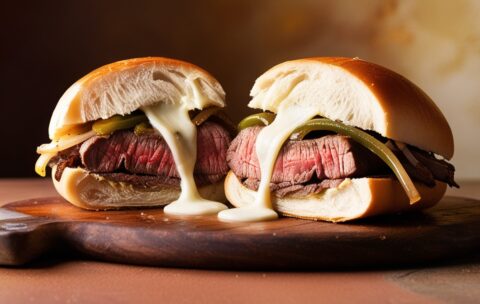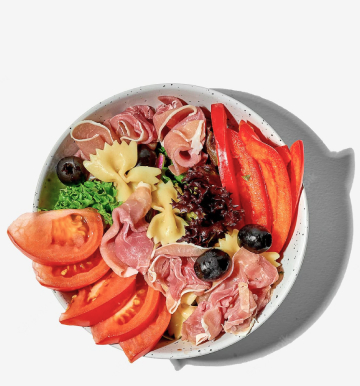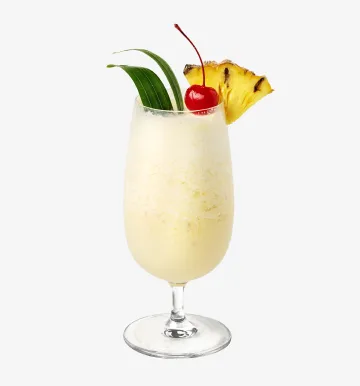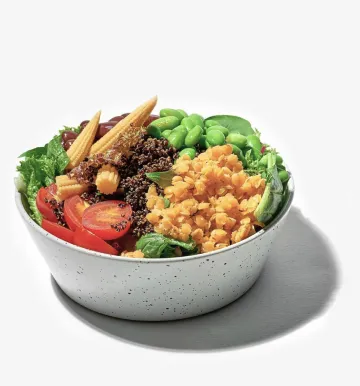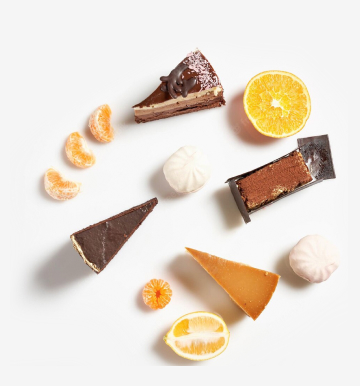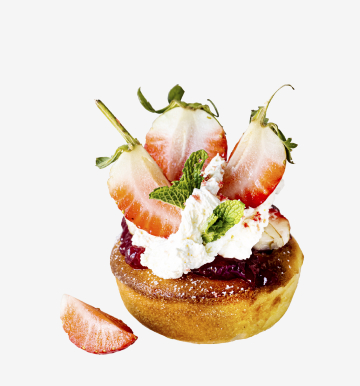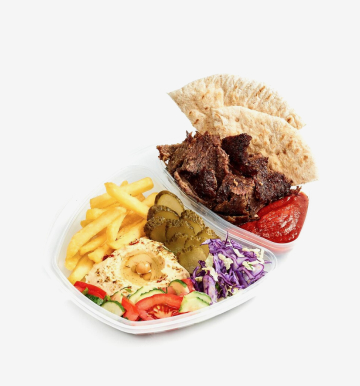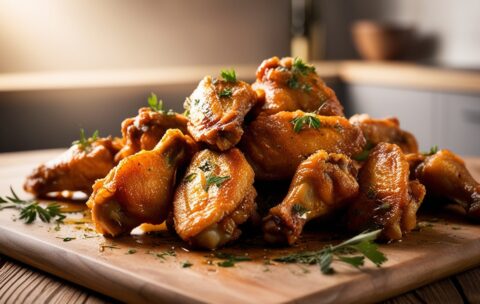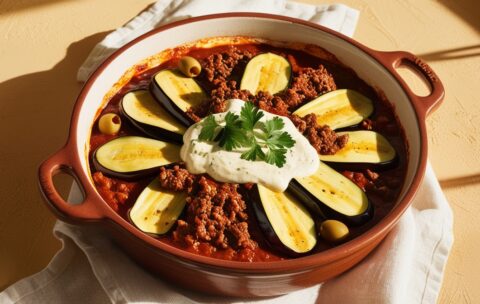Home Update 02
October 4, 2023 2025-06-05 13:04Home Update 02
Become a Home Chef
Learn to cook from scratch and master restaurant-quality meals in your own kitchen. Perfect for beginners and food lovers.

Our Top Courses
We've selected the best programs to get you started. Each course offers step-by-step lessons, hands-on recipes, and guaranteed results — even for beginners.
Philly Cheesesteak
3 Lessons
3.8 hours
Intermediate
What you'll learn
How to choose and prepare the ideal cut of beef (ribeye or top round) for optimal flavor and tenderness.
Techniques for slicing steak paper-thin—even when working with untrimmed roasts—to ensure quick, even cooking.
Methods for properly caramelizing onions (and optional peppers) so they develop sweetness without burning.
The art of toasting a hoagie roll: achieving a lightly crisp exterior that still yields under melted cheese.
Cheese-melting strategies (provolone, American, or Cheez Whiz): achieving a gooey, coated consistency without overcooking.
Assembly order and timing: layering meat, onions, and cheese so each bite is balanced and warm.
Customization ideas: adding mushrooms, hot peppers, or garlic aioli to elevate traditional flavors.
Eggplant Parmesan
4 Lessons
59 minutes
Intermediate
What you'll learn
Below is an overview of the key skills and concepts you’ll master by the end of this lesson.
Outcome Description
Eggplant Selection & Prep Identify firm, glossy eggplants with minimal seeds; learn to salt and remove bitterness.
Breaded Coating Technique Achieve a crisp, golden crust using both breadcrumb and flour methods.
Tomato Sauce Creation Make a balanced marinara: tomato acidity, sautéed aromatics, and fresh basil notes.
Layering & Baking Stack components without sliding, ensuring even coverage and melt.
Cheese Choices & Melting Compare mozzarella versus provolone, and understand how Parmigiano-Reggiano adds depth.
Presentation & Garnish Plate the dish with fresh herbs, extra cheese shavings, and optional balsamic glaze.
Loaded Nachos
5 Lessons
2.6 hours
Intermediate
What you'll learn
Chip Selection & Prep: How to choose sturdy yet crispy tortilla chips to prevent sogginess under heavy toppings.
Protein Options: Techniques for seasoning and cooking ground beef, shredded chicken, or black beans to use as a hearty nacho base.
Cheese Melting Methods: Tips for pairing cheeses (cheddar, Monterey Jack, Pepper Jack) and getting an even melt under the broiler or in the oven.
Layering Strategies: The optimal sequence for chips, beans, cheeses, proteins, and vegetables so each bite has balanced texture—no more soggy bottoms or cold patches.
Homemade Toppings: Quick recipes for pico de gallo, guacamole, and sour cream drizzle, plus how to pickle jalapeños or shred lettuce for freshness.
Garnishing & Presentation: Final touches—cilantro, green onions, lime wedges, and diced tomatoes—to turn a simple tray into an Instagram-worthy platter.
Serving & Reheating: Best practices for keeping loaded nachos warm, how to reheat leftovers without losing crispiness, and portion guidance for parties of various sizes.
Espresso Martini
7 Lessons
2.5 hours
Intermediate
What you'll learn
Historical Background: Trace the origins of the Espresso Martini and understand its cultural impact in the mid-1980s London bar scene.
Ingredient Selection: Identify the ideal vodka and coffee liqueur varieties, plus quality indicators for fresh espresso beans.
Espresso Extraction: Master key variables—pressure, temperature, and timing—to pull a shot optimized for a cocktail.
Mixology Techniques: Learn dry-shaking and ice-shaking methods to achieve a rich, stable crema and a perfectly chilled drink.
Straining & Presentation: Discover how to double-strain for a crystal-clear pour, layer foam properly, and place garnishes without collapsing the crema.
Serving & Pairing: Explore glassware choices, serving temperatures, and ideal food pairings for various occasions.
Coq au Vin
3 Lessons
2.3 hours
Intermediate
What you'll learn
Ingredient Selection & Preparation:
How to choose the right cut of chicken (whole, thighs, or a combination) and select complementary wine (e.g., Burgundy Pinot Noir or alternative regional varieties).
Proper techniques for trimming, seasoning, and preparing lardons, mushrooms, and root vegetables.
Braising Fundamentals:
The importance of searing chicken pieces for color and flavor development.
How to deglaze a Dutch oven or heavy-bottomed casserole with red wine, preserving all the fond (browned bits) on the pan bottom.
Flavor-Building Strategies:
Layering aromatics—onion, garlic, carrot, thyme, and bay leaf—to create depth.
Controlling heat and timing for a slow, gentle simmer that yields tender meat and a concentrated sauce.
Sauce Reduction & Finishing Touches:
Techniques for skimming excess fat and reducing the braising liquid to a velvety consistency.
Tips for adding mushrooms and optional garnishes (parsley, fresh herbs) at the final stage for maximum aroma and texture.
Plating & Serving Suggestions:
How to present Coq au Vin with traditional accompaniments (e.g., buttered noodles, mashed potatoes, crusty bread).
Strategies for reheating or holding the dish without sacrificing quality, making it ideal for dinner parties.
Beef Tacos
6 Lessons
2.5 hours
Intermediate
What you'll learn
Beef Selection & Preparation: How to choose between ground beef, skirt steak, or chuck roast; trimming and cutting techniques for even cooking.
Seasoning & Marinades: Crafting a balanced spice blend (chili powder, cumin, oregano) and optional citrus-based marinade for tender, flavorful beef.
Cooking Methods: Techniques for stovetop sautéing, grilling, and slow-simmering to achieve optimal texture and taste.
Tortilla Choices & Warming: Differences between corn and flour tortillas; methods to warm or lightly char tortillas on a skillet or griddle.
Salsa & Sauce Creation: Simple recipes for pico de gallo, salsa verde, and creamy sauces (e.g., crema or chipotle aioli), including ingredient ratios and seasoning adjustments.
Taco Assembly & Layering: Order of layering (meat, salsa, cheese, garnishes) to prevent sogginess; tips on portion sizing and presentation.
Garnish Variations: Ideas for fresh cilantro, diced onions, lime wedges, pickled jalapeños, and cotija cheese to enhance each bite.
Serving & Pairings: Suggestions for sides (rice, beans, elote) and beverage pairings (margaritas, aguas frescas) to complete the meal.
Lamb Rogan Jos
3 Lessons
2.2 hours
Intermediate
What you'll learn
Outcome Description
Spice Selection & Preparation Identify and roast whole spices (cinnamon, cardamom, cloves) to form the foundation of the masala.
Yogurt Marinade Techniques Use yogurt and acid (lime or lemon) to tenderize lamb while preserving a creamy texture.
Building the Masala Layer ground spices (Kashmiri chili powder, coriander, cumin) for a balanced, vibrant curry base.
Browning & Layering Flavors Sear lamb to lock in juices, then deglaze with aromatics (onion, ginger, garlic) for depth.
Slow Simmering & Consistency Regulate heat and timing to allow lamb to become fork-tender without curdling the yogurt.
Finishing Touches Garnish with fresh cilantro, julienned ginger, and a drizzle of ghee for aroma and shine.
Duck Breast with Caramelized Apples and Port Wine Sauce
2 Lessons
1.9 hour
Intermediate
What you'll learn
How to score and season duck breast for optimal rendered fat and crisp skin
Techniques for safely rendering duck fat in a cold pan and achieving uniform sear
Steps to caramelize apple wedges using butter, brown sugar, and a pinch of cinnamon
Methods for constructing a port wine reduction with shallots, herbs, and a splash of balsamic
Timing coordination to rest the duck and serve apples and sauce at the perfect temperature
Niçoise Salad
3 Lessons
3.5 hours
Intermediate
What you'll learn
How to cook baby potatoes to a tender yet firm “bite”
Blanching haricot verts (thin green beans) for vibrant color and snap
Properly searing fresh tuna (or preparing high-quality canned tuna)
Crafting a classic Dijon-vinaigrette with shallots and garlic
Composing and plating a balanced, restaurant-style Niçoise
Lobster Roll with Garlic Butter
4 Lessons
3.3 hours
Intermediate
What you'll learn
How to select, buy, and cook fresh lobster meat (from boiling/steaming to picking meat).
Techniques for making flavored garlic butter (infusing with garlic, herbs, lemon zest).
Proper seasoning and temperature control to keep lobster tender and juicy.
Best practices for toasting split-top hot dog buns or brioche rolls so they hold up and absorb butter.
How to assemble and garnish a Lobster Roll (balancing textures with finely chopped celery, chives, or parsley).
Choose Your Category
Our courses are grouped by category to help you find what suits your taste. From quick dinners to gourmet desserts — start with what inspires you.



About Our Culinary Journey
We are passionate about bringing the joy of cooking to everyone. Our mission is to empower food lovers with the skills and confidence to create delicious meals at home. With expert chefs, innovative teaching methods, and a love for culinary arts, we’re here to inspire your kitchen adventures.
Our Commitment
Everyone can cook well. Our courses offer clear guidance to ensure success for all skill levels.
Community Focus
Join our foodie community. Share creations and grow in a supportive environment.
Why Choose Our Culinary Courses?
Our courses are designed to make cooking fun, accessible, and inspiring. Whether you're a beginner or a seasoned cook, our unique features will help you elevate your skills and unleash your culinary creativity.

Expert Instructors
Learn from world-class chefs with years of experience. Our instructors guide you step-by-step, sharing professional tips.

Flexible Learning
Study at your own pace, anytime, anywhere. Our online platform offers 24/7 access to lessons, so you can fit cooking into your busy schedule.

Hands-On Recipes
Practice with real recipes designed for all skill levels. From classic dishes to modern creations, you’ll master meals that impress every time.
What Our
Students Say
Hear from our happy students who have transformed their cooking skills with our courses. From beginners to seasoned cooks, our community loves sharing their success stories!
"This course completely changed how I cook! The instructors are so knowledgeable, and the lessons are easy to follow. I’m now confident making dishes I never thought I could."
Emma Johnson
"I love the flexibility of these courses. I can learn at my own pace and still feel supported. The recipes are amazing, and I’ve impressed my family with new dishes!"
Michael Chen
"The vegan cooking course was a game-changer for me. I learned so many creative ways to make plant-based meals that taste incredible. Highly recommend!"
Sophie Martinez
"The hands-on approach made learning so fun! I went from burning toast to baking artisan bread in weeks. Thank you for such an inspiring experience!"
James Carter
Discover Our Newest Culinary Courses
Get inspired by our latest additions! These exciting courses bring fresh ideas and techniques to your kitchen, perfect for food lovers eager to try something new. Browse our carousel to find your next culinary adventure.
Apple Strudel
4 Lessons
4.3 hours
Intermediate
What you'll learn
How to prepare and knead traditional strudel dough, achieving elasticity without gluten overdevelopment.
Techniques for resting and stretching dough until it is paper-thin.
How to make a perfectly balanced apple filling: selecting the right apple varieties, mixing sugar, spices, raisins, and breadcrumbs.
Methods for brushing with butter and rolling without tearing dough.
Baking tips to ensure a golden, crisp crust and tender, aromatic interior.
Variations: nut-studded apple strudel, cherry-apple combination, nut-free options for allergies.
Simple plating and serving suggestions—warm from the oven with vanilla sauce, whipped cream, or a dusting of powdered sugar.
The Ultimate Crispy Chicken Wings Masterclass
3 Lessons
4 hours
Intermediate
What you'll learn
How to inspect and choose high-quality chicken wings for optimal taste and texture.
Proper trimming, joint separation, and brining methods to maximize moisture retention.
Seasoning strategies and marinade formulations that enhance depth of flavor.
Key differences between oven-baking, deep-frying, and air-frying to achieve different levels of crispiness.
Temperature control, timing, and airflow management to guarantee a golden, crunchy crust.
Louis XIII Pure Gold Cocktail
4 Lessons
2.3 hours
Intermediate
What you'll learn
How to select and handle Louis XIII Cognac to preserve its intricate aromatic profile
Techniques for incorporating edible gold safely and attractively
Crafting a saffron-infused vermouth modifier that enhances, not overpowers, the cognac’s rancio
Proper stirring and dilution to maintain clarity while achieving silky texture
Choosing quality orange bitters and balancing their citric-spice character against the spirit base
Presentation tips: from glass choice to garnish placement for maximal visual impact
Serving temperature guidelines to showcase every nuance of ultra-aged cognac
International Cake Traditions
5 Lessons
2.9 hours
Intermediate
What you'll learn
How to prepare and bake at least five signature cakes from different countries, using authentic ingredients and methods
The cultural and historical significance of each cake: when and why it’s traditionally served
Variations on flavorings and decorations that make each region’s version unique
Techniques for achieving proper texture, moisture, and flavor balance in international recipes
Tips for adapting ingredients when certain items are not readily available in your area
Presentation ideas to honor traditional styles (for example, Panettone’s distinctive domed shape or a Japanese wagashi’s intricate design)
Art of Fondant & Modeling Chocolate
4 Lessons
1.2 hour
Intermediate
What you'll learn
Fondant Fundamentals: How to knead, roll, and cover a cake in smooth fondant; troubleshooting common issues like tearing or cracking.
Color Mixing & Painting: Methods for achieving uniform pastel or vibrant hues using gel, powder, and airbrush techniques; blending shades for gradients and ombré effects.
Modeling Chocolate Preparation: Step-by-step process to make stable, pliable modeling chocolate at home—adjusting ratios for firmness or flexibility.
Sculpting Techniques: Building 3D elements (flowers, animals, figurines) layer by layer; using armature supports for larger models.
Texture & Embellishment: Creating realistic surface details—wood grain, lace patterns, ruffles, and draping—using molds, veiners, embossing tools, and impression mats.
Piping & Detailing: Accenting fondant and modeling chocolate pieces with royal icing, edible beads, and dusting powders to add dimension and realism.
Assembly & Structural Integrity: Best practices for attaching heavy sugar components to cake tiers; internal support systems (dowels, skewers) to ensure stability during transport and display.
Layer Cake Construction & Filling Strategies
3 Lessons
58 minutes
Intermediate
What you'll learn
Baking for Uniform Layers: How to prep pans (lining, spray), adjust batter distribution, and use baking strips or temperature hacks for flat, even cake tops.
Leveling & Stacking: Knife vs. cake leveler methods; applying a thin “crumb coat” of frosting; inserting dowels or straws for multi-tier support; stacking layers without slippage.
Filling Varieties & Textures: Selecting between custards, curds, fruit compotes, ganaches, buttercreams, and mousse fillings—considering sweetness, moisture control, and pairings (e.g., raspberry curd with chocolate cake).
Preventing Leaks & Weeping: Techniques for sealing cake layers (buttercream dam, chocolate collar), ensuring fillings stay contained; chilling strategies to set fillings before final coating.
Flavor Harmony & Balance: Matching cake flavor (vanilla, chocolate, spice) with filling profiles (tart, sweet, creamy) to avoid one element overpowering another; adjusting sweetness levels.
Finishing & Presentation Prep: Applying a smooth final coat of frosting or ganache; creating optional decorative borders or piped accents; slicing tips for clean, even servings.
Moussaka
3 Lessons
1.1 hour
Intermediate
What you'll learn
How to choose and prepare eggplants (salting/removing bitterness, proper slicing, and roasting) for ideal texture.
Techniques for browning ground lamb or beef, layering in tomato paste, crushed tomatoes, and seasonings (cinnamon, oregano, allspice).
Steps to make a silky-smooth béchamel sauce: roux creation, milk tempering, seasoning, and controlling thickness.
Methods for constructing Moussaka “assembly”—layering eggplant, meat sauce, and béchamel—to ensure even baking.
Guidelines for baking time and temperature so the top turns golden brown without drying out the filling.
Presentation tips: letting Moussaka rest for clean slices, garnishing with chopped parsley, and pairing with Greek salad or crusty bread.
Panzanella Salad
5 Lessons
3.6 hours
Intermediate
What you'll learn
How to choose and prep day-old bread for optimal texture
Techniques for toasting or pan-frying bread cubes so they stay crisp yet absorb dressing
Selecting and handling peak-season tomatoes and cucumbers for maximum juiciness
Crafting a harmonious vinaigrette of olive oil, vinegar, garlic, and seasonings
Layering ingredients and timing the rest period to meld flavors without sogginess
Bloody Mary
3 Lessons
1.7 hour
Intermediate
What you'll learn
How to balance tomato juice, vodka, and spice for a perfectly seasoned cocktail.
Techniques for layering Worcestershire sauce, hot sauce, and horseradish to build depth of flavor.
Proper methods to rim a glass (celery salt, pepper, or spice blend) for added texture and taste.
Creative garnish arrangements—from classic celery stalks to pickles, olives, and bacon.
Ways to customize heat level and saltiness to suit different preferences.
Tips for preparing a large batch (pitcher or bar-style) without sacrificing freshness.
French Gateau & Entremet Principles
2 Lessons
1.3 hour
Intermediate
What you'll learn
Fundamental Structures: How to build entremets layer by layer—choosing and baking the right sponge (génoise, Joconde, biscuit cuillère), creating thin croustillant layers, and assembling mousse and bavarois tiers for height and stability.
Texture & Temperature Management: Techniques to ensure each component sets properly (e.g., mousse firmness, gelatin bloom, glaze viscosity) and how to keep layers distinct without bleeding.
Flavor Profiling & Balance: Pairing fruit purées, chocolate, nuts, and creams to achieve harmonious taste profiles. Understanding acidity, sweetness, and how to cut richness with complementary elements (fruit inserts, crunchy praline).
Advanced Finishing Techniques: Preparing and applying a smooth mirror glaze, torching velour sprays, using transfer sheets, and piping delicate decorations. Learning how to achieve a polished, professional look every time.
Assembly & Troubleshooting: Best practices for unmolding, repositioning, and storing entremets. Identifying and correcting common issues—sogginess, collapsed layers, uneven glazes.
Presentation & Plating: Strategies for cutting perfectly even slices, garnishing with textures (tuile, cocoa nibs, spun sugar), and arranging plated portions so they look as good as they taste.

